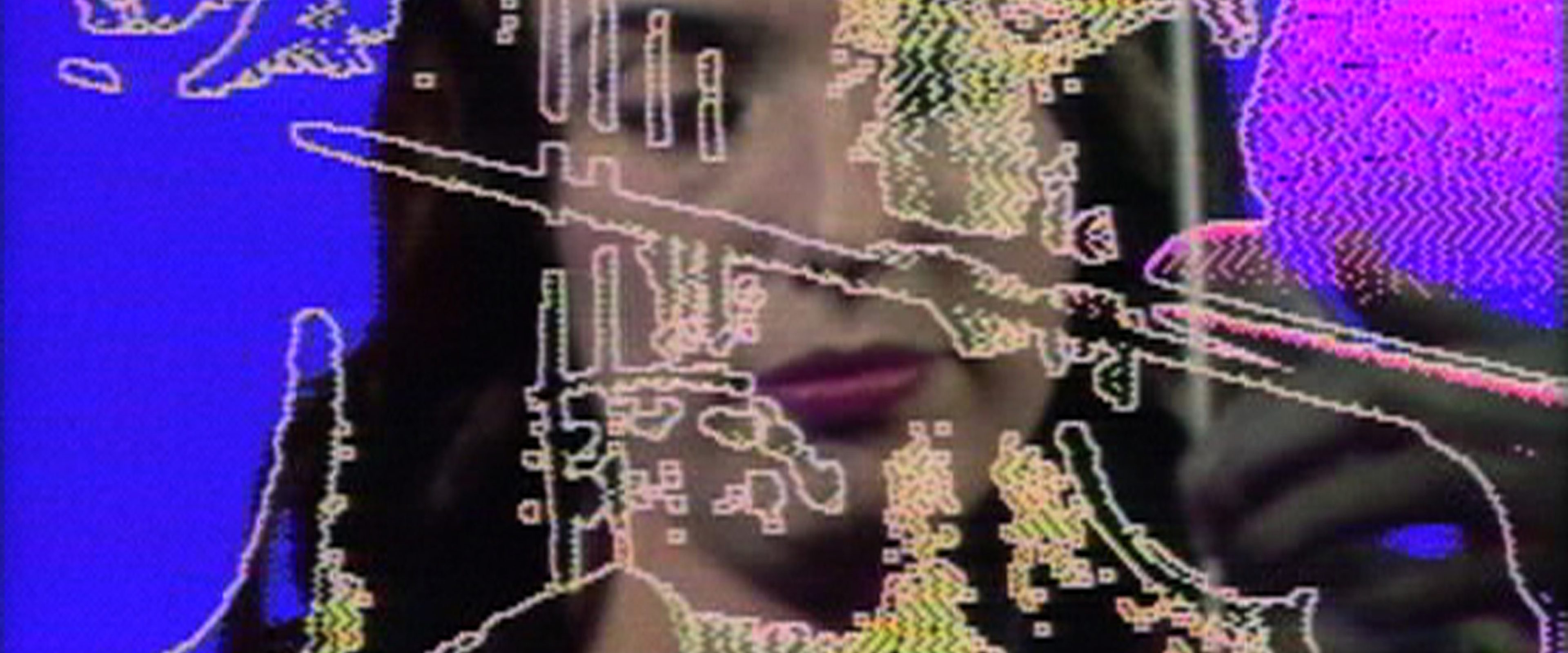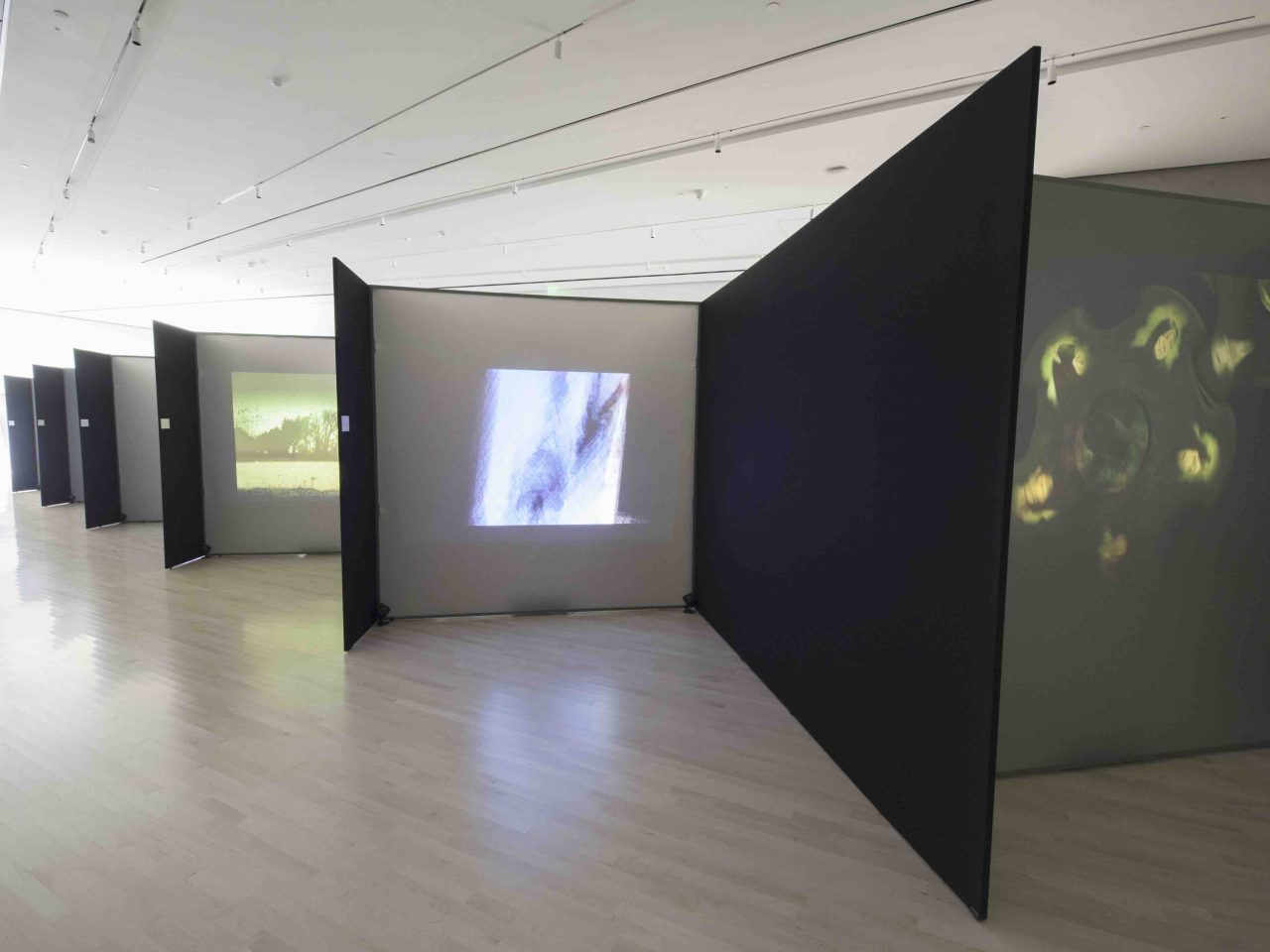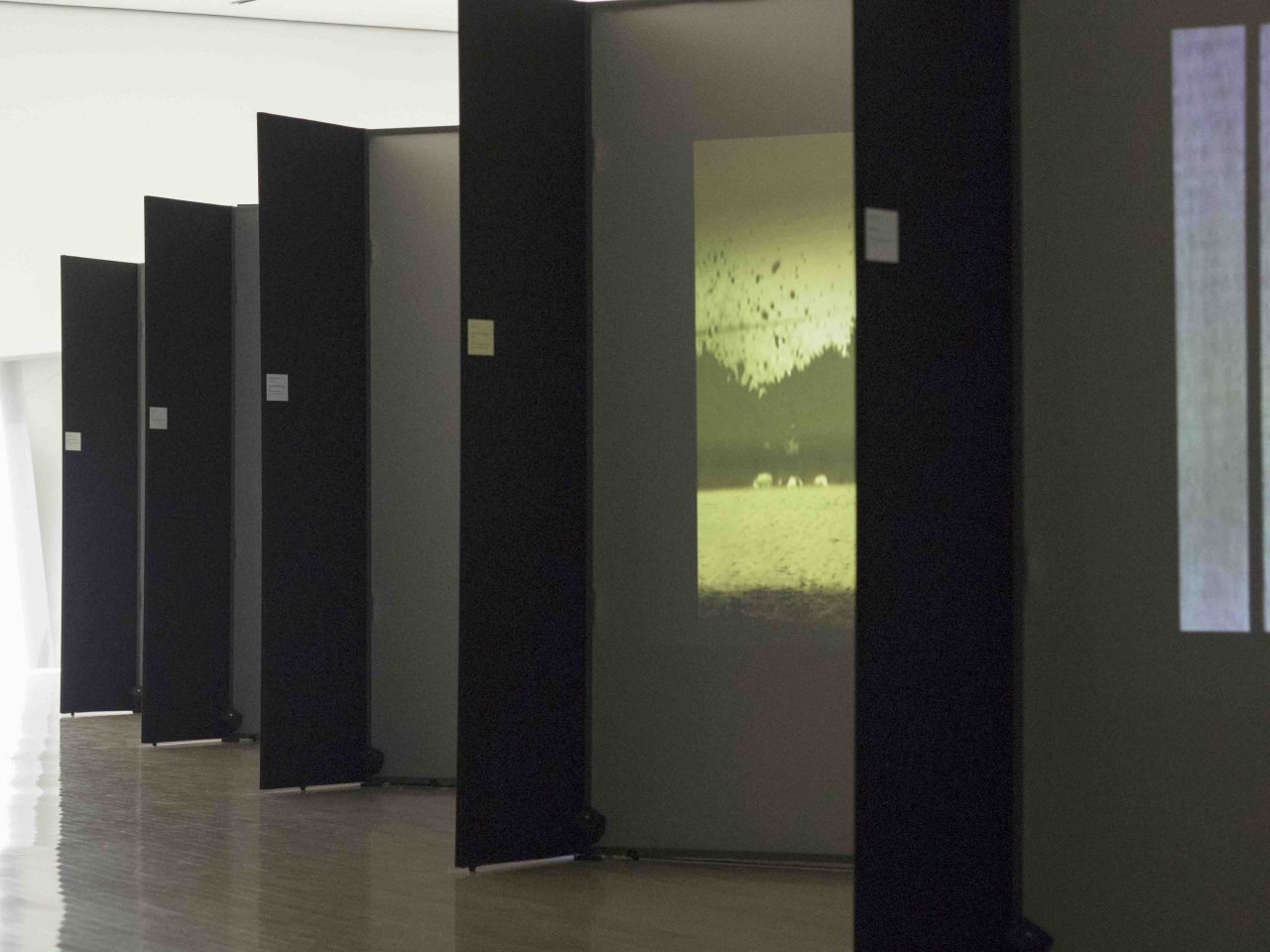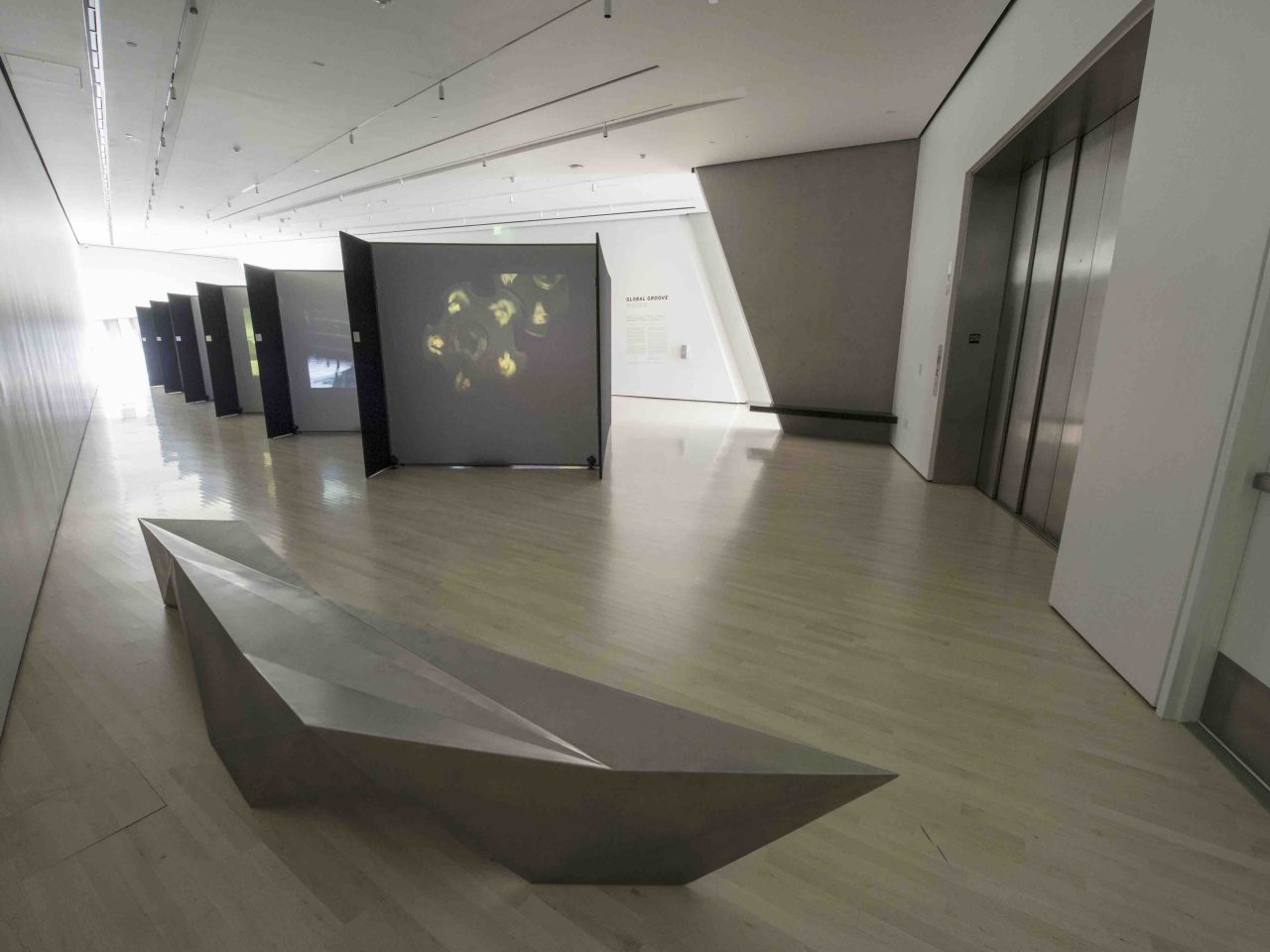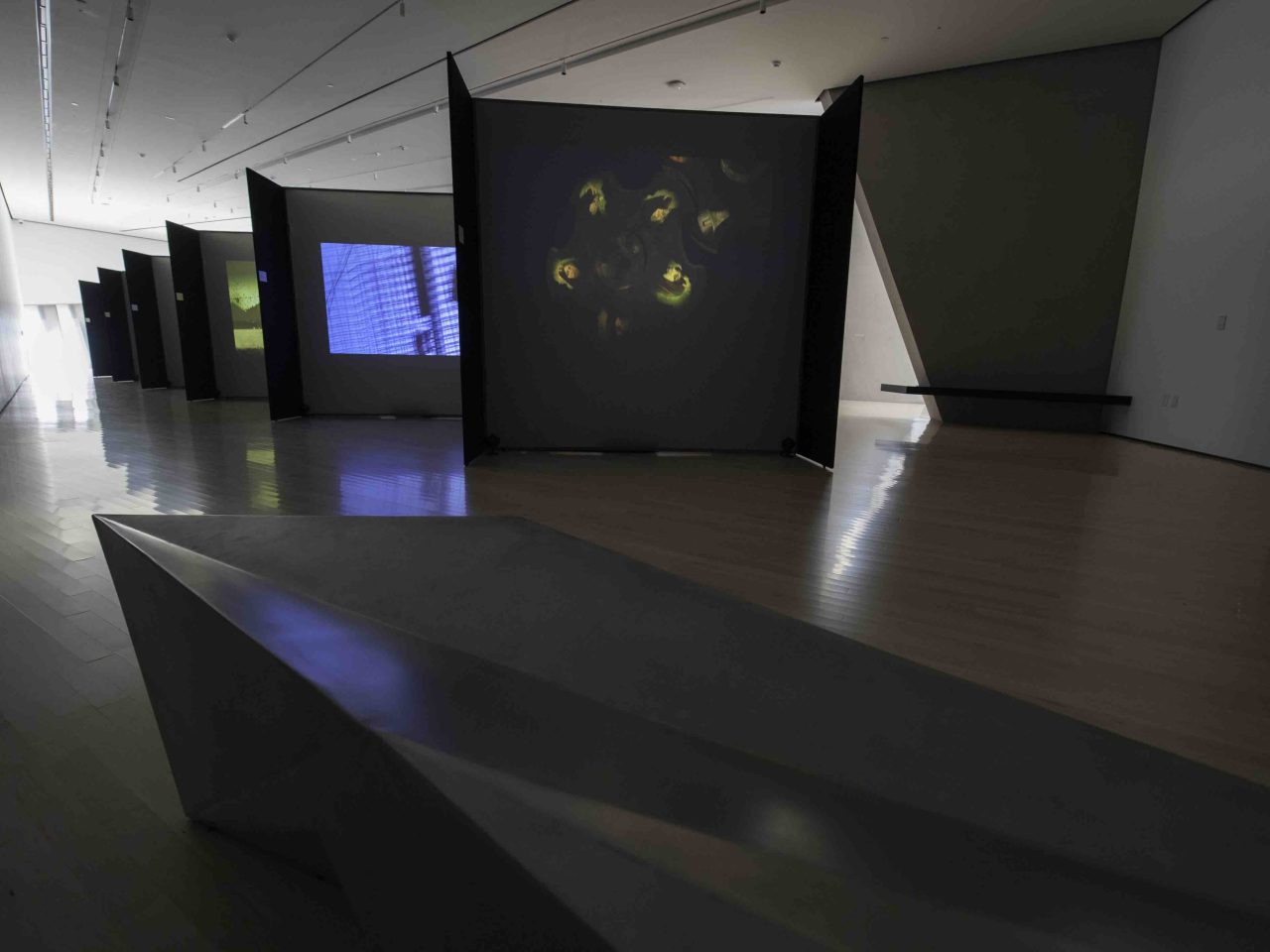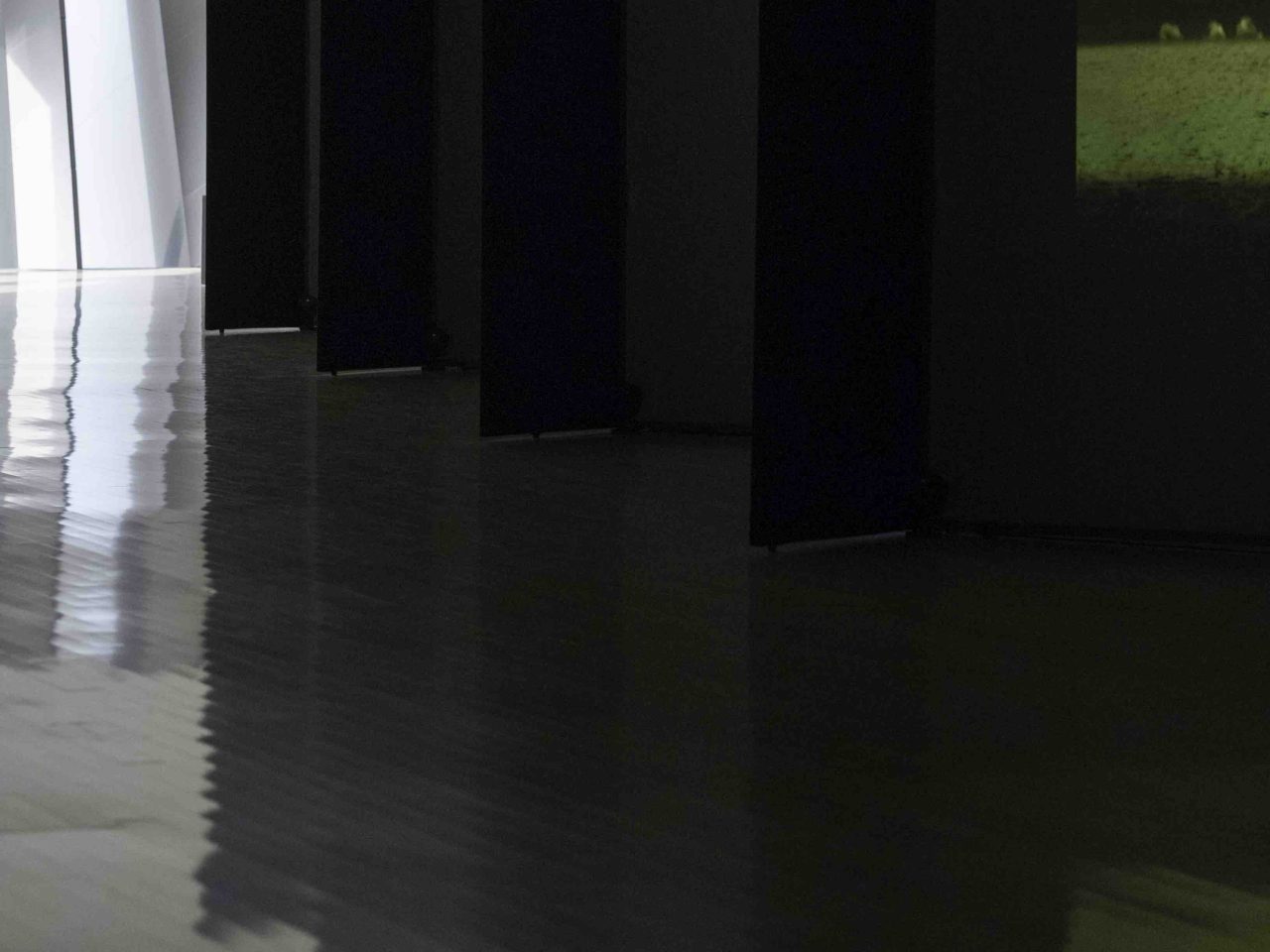Global Groove 1973/2012 is organized by the Eli and Edythe Broad Art Museum at Michigan State University and curated by Michael Rush, Founding Director.
About the Exhibition
In terms of the long sweep of art history, video art is a very new phenomenon. Born in the mid-1960s, when television and video technologies became available outside of broadcast studios and pioneering artists Nam June Paik and Andy Warhol obtained their first portable video cameras, video art is now ubiquitous in the modern world… or at least videos have become so. YouTube alone launches 48 hours of video every minute! The art of video is another matter, and that is the subject of Global Groove 1973/2012, an exhibition that celebrates this art form by paying homage to its first major practitioner, Nam June Paik (1932–2006), and offering an overview of current examples of the genre by an international sampling of artists, some of whom are working under very difficult political constraints.
This presentation features Paik’s seminal video from 1973, Global Groove, as a jumping-off point from which to explore current trends in international video art. A characteristically fast-paced barrage of images and sounds, Global Groove was Paik’s prophetic statement about the future ubiquity of video. “This is a glimpse of a video landscape of tomorrow, when you will be able to switch to any TV station on the earth and TV Guides will be as fat as the Manhattan telephone book,” he said. His kinetically edited single-channel video anticipated the “video cities” we now inhabit (New York, Shanghai, Seoul), where video screens as high as buildings engulf entire city centers.
What Paik was not necessarily predicting was the rapid rise of video as an artistic medium. As video cameras and digital editing equipment have become ever more accessible into the 1990s and now the twenty-first century, video has been adopted by artists worldwide. This exhibition is a tribute to that international phenomenon featuring artists from the Middle East, Asia, Africa, Europe, and the United States. Global Groove highlights multiple artistic approaches to the medium, from low-tech to highly cinematic, personal and diaristic to intensely political and challenging. The presentation encompasses a unique architectural space for video at the center of the MSU Broad’s largest gallery, a feature that allows visitors to experience the contours of the building’s architecture as well as those of the exhibition. In this sense, Global Groove is in itself an immersive installation with multiple moving parts. It may in fact be seen as a new type of cinémathèque: a maze of screens that viewers can move among, pause, return to, leave, or revisit at a later time.
The artists of Global Groove 1973/2012 include Bashar Alhroub (Palestinian Territories); Negar Behbahani (Iran); Berry Bickle (Zimbabwe); Sam Jury (Great Britain); Lee Yongbaek (South Korea); Li Ming (China); Basir Mahmood (Pakistan); Zwelethu Mthethwa and Matthew Hindley (South Africa); Nam June Paik (South Korea); The Propeller Group (Vietnam); Eve Sussman and Simon Lee (USA); Zhao Yao (China).
